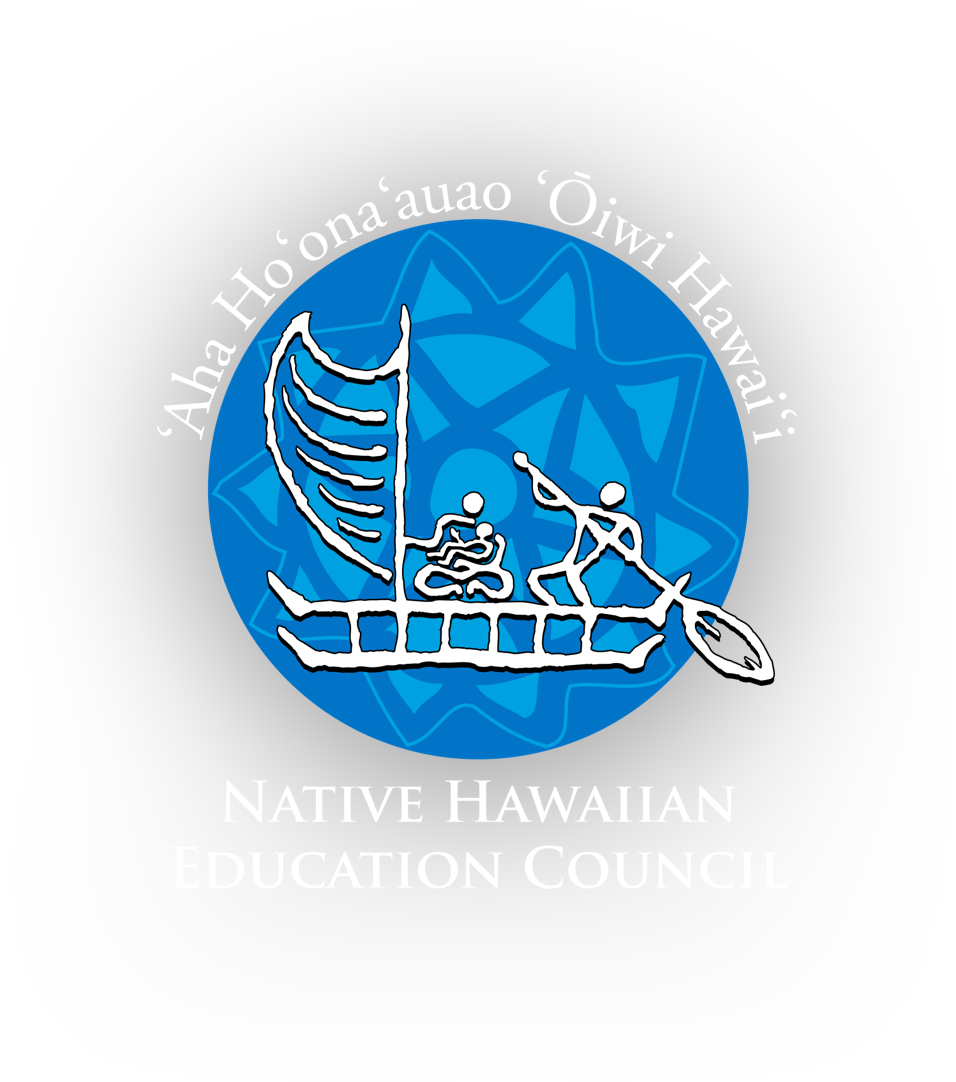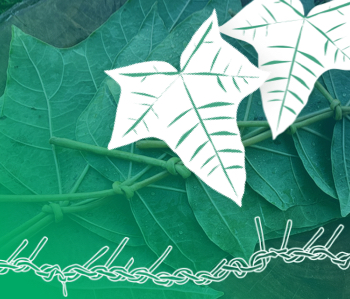2022 Annual Report
I lāhui na‘auao Hawai‘i pono, I lāhui Hawai‘i pono na‘auao.
There will be a culturally enlightened Hawaiian nation,
There will be a Hawaiian nation enlightened.

Priorities Criterion
Criteria for Determining Priority Recommendations
01 First Criterion
Criterion 1: The project provides evidence of innovative approaches to addressing and/or stabilizing impacts of COVID-19 in a target school or community where the proportion of Native Hawaiians meets or exceeds the average population of Native Hawaiians in the HIDOE system through engaging in two-way, mutually respectful collaboration with key stakeholders (including families, caretakers, students, educators, teachers, school leaders, and school staff) and community leaders from diverse and socioeconomic backgrounds, to assess and understand students’ social, emotional, physical and mental health, and Hawaiian language, culture-based and place-based academic needs.
Culture, language, and ‘āina. Participants of NHEC’s community consultations reported new possibilities in cultural learning—virtual or in person—and ‘āina-based learning during the pandemic. Participants stated cultural content which also imparts Hawaiian values is increasingly more important in a pandemic and post-pandemic world. The ability of Native Hawaiian communities to continue engaging in cultural practices amid pandemic closures and shelter-in-place orders was and continues to be critical. Native Hawaiians are culturally impacted by the pandemic because of their strong connection to ‘āina (Kamehameha Schools Strategy & Transformation Group, Lili‘uokalani Trust, & Office of Hawaiian Affairs, 2021).

Read more
Participants also experienced or witnessed food insecurity, which helped them to see the incredible importance ‘āina-based learning and ‘āina practices have in sustaining life. They witnessed an elevation of cultural knowledge and ‘āina practices during the pandemic and believe that this provides ripe opportunities for NHEP, not just to inform funding for academic purposes, but also ensure the long-term survival of Native Hawaiians.
Physical and mental health. Participants noted that having a strong identity in a very complex crisis, like the COVID-19 pandemic, enhances protective factors and strengthens mental health. The top two areas of concern for Native Hawaiians impacted by the pandemic are physical health (79%) and mental and emotional wellbeing (67%) (Kamehameha Schools Strategy & Transformation Group, Lili‘uokalani Trust, & Office of Hawaiian Affairs, 2021).
02 Second Criterion
Criterion 2: The proportion of Native Hawaiians in the target school or community to be served meets or exceeds the average proportion of Native Hawaiian students in the HIDOE system.
Within the last 10 years, U.S. Census 2020 reports that the Native Hawaiian-Pacific Islander population grew by 28%, making NHPIs the fifth largest ethinic group with a total population of 1.6 million (Jones, Marks, Ramirez, & Ríos-Vargas, 2021). Although recent census reports that only 11% of Hawai‘i’s total population constitutes Native Hawaiians, they make up the single largest ethnic group (26%) in the HIDOE system (Office of Hawaiian Affairs, 2017). Further, schools where Native Hawaiian student enrollment exceeds 50% are concentrated in rural communities throughout the Hawai‘i. Seventeen percent of Hawai‘i public K-12 schools are designated as “rural” by standards of the National Center for Education Statistics, with 42% of Hawai‘i’s rural schools considered distant or remote locations that require costly air transport to connect to the nearest metropolitan center (Hawai‘i State Department of Education, 2015).
Read more
03 Third Criterion
Criterion 3: The project serves Native Hawaiians in schools in which the proportion of students who are eligible for the free or reduced-price school lunch program is higher than the state average.
The National School Lunch Program is the largest federally-funded assisted meal program providing nutritionally balanced, reduced-cost or free lunches to children from low-income families in public and nonprofit private schools and residential child care institutions. The HIDOE reported for school year 2019-2020 (pre-pandemic) that 47.39% or 84,993 students, are considered economically disadvantaged (Hawai‘i State Department of Education, 2021).
Read more
Eligibility for the free and reduced-cost lunch program is often used as an indicator of socio-economic status. Students whose families meet the income qualifications for the federal free/reduced-cost lunch program are often referred to as “economically disadvantaged.
Research shows that Native Hawaiians account for the highest percentage of families in poverty compared to other ethnic groups. Close to 70% of Native Hawaiian students depend on the free or reduced-cost meal program compared to 46.7% of non-Native Hawaiian students in the same program (Kamehameha Schools Strategy & Transformation Group, Lili‘uokalani Trust, & Office of Hawaiian Affairs, 2021). The combination of education, employment, and income of a family’s socio-economic status can affect a child’s academic achievement. Limited financial resources for children from economically disadvantaged homes means less access to learning resources such as broadband, digital devices, tutoring support or even school supplies. To reduce economic inequalities and promote opportunities for academic achievement, NHEP funding should address schools and programs that serve a higher-than-average student population rate in the federally subsidized school lunch program.
04 Fourth Criterion
Criterion 4: The project serves Native Hawaiian students in persistently low-performing schools in the Hawai‘i Department of Education.
During school year 2012-2013, the HIDOE launched the Strive HI Performance System as the State’s own accountability and school improvement system with multiple measures for student academic performance, achievement gaps, academic growth, graduation completion, and chronic absenteeism. The system aligns with the reauthoriziation of the federal Every Student Succeeds Act and connects key state education policies and initiatives by optimizing data for progress and targeting resources.
Read more
In alignment with Criteria 2 and 3, the pandemic deepened the divide in educational opportunity—in access, achievement, and outcomes with schools who were already low-performing with high populations of economically disadvantaged Native Hawaiian students prior to COVID-19 (U.S. Department of Education’s Office for Civil Rights, 2021). NHEP funding is needed to expand access to learning opportunities for Native Hawaiian students and families enrolled in low-performing schools and close achievement gaps distinguishing underserved Native Hawaiian students from higher performing peers.
05 Fifth Criterion
Criterion 5: The project provides evidence of collaboration with the Native Hawaiian community.
Building on the principles of community-based participatory research of equitable collaboration and mutual trust between partners is most aligned to Native Hawaiian cultural values. This approach to community participation and involvement promotes:..
Read more
- Co-learning and co-leading for change: Building space to form strong and intentional partnership structures with shared power flow of decision-making that can lead to broader educational outcomes for both program and community.
- Creating community ownership for sustained programming: Involving community members most likely to utilize program services with its development and planning builds long-term trust, buy-in, and ultimately ownership of longitudinal success of educational outcomes.
- Explores community ‘ike (ways of knowing, understanding) and values for community-based solutions: Empowering community as co-researchers and agents of change to support investigation of their own challenges and identifying solutions for collective outcomes.
To ensure that the services to be provided reflect community needs, and to make certain participatory practices of community involvement and input in the design, implementation, and evaluation of the project are incorporated, applicants for NHEP funding should document their extent of collaboration with the Native Hawaiian community in the grant application process, during implementation of project activities if funded, and in the project evaluation.
Reference List
Aloha+ Challenge Collective. (n.d.). Aloha+ Challenge Green Workforce and Education 01 ‘Āina-based Education & Community Engagement. Retrieved November 2022, from Aloha+ Challenge: alohachallenge.hawaii.gov/pages/gwe-01-aina-based-education-community-engagement
Dragon Smith, C. (2020, April 8). Creating Ethical Spaces: Opportunities to Connect with the Land for Life and Learning in the NWT. Toronto: The Gordon Foundation.
Hawai‘i State Department of Education. (2015, November 9). Hawai‘i State Department of Education Equitable Access to Excellent Educators. Retrieved from U.S. Department of Education: https://www2.ed.gov/programs/titleiparta/equitable/hiequityplan120715.pdf
Hawai‘i State Department of Education. (2021). Media Kit. Retrieved November 2021, from Hawai‘i State Department of Education: www.hawaiipublicschools.org/ConnectWithUs/MediaRoom/MediaKit/Pages/home.aspx
Hawai’i State Department of Education. (2022, October 12). 2021-22 Strive HI System results. Retrieved December 2022, from Hawai’i State Department of Education: www.hawaiipublicschools.org/VisionForSuccess/AdvancingEducation/StriveHIPerformanceSystem/Pages/ 2021-22-results.aspx
Hofschneider, A. (2020, May 10). Hawaiians, Pacific Islanders Confront High Rates Of COVID-19 In Many States. Retrieved November 2022, from Honolulu Civil Beat: www.civilbeat.org/2020/05/hawaiians-pacific-islanders-confront-high-rates-of-covid-19-in-many-states/
Innovation Network. (2016). State of Evaluation 2016: Evaluation Practices and Capacity in the Nonprofit Sector. Innovation Network. Innovation Network.
Jones, N., Marks, R., Ramirez, R., & Ríos-Vargas, M. (2021, August 12). 2020 Census Illuminates Racial and Ethnic Composition of the Country. United States Census Bureau, Population Division.
Kaholokula, J. K., Samoa, R. A., Miyamoto, R. E., Palafox, N., & Daniels, S.-A. (2020, May 1). COVID-19 Special Column: COVID-19 Hits Native Hawaiian and Pacific Islander Communities the Hardest. Hawaii Journal of Health & Social Welfare, 79(5), 144-146.
Kamaka, M. L., Freitas, S. M., Marshall, S. M., Walsh, M. E., Kamakawiwo‘ole, S., Miller, J. M., . . . Vakalahi, H. (2021, October). He ‘A‘ali‘i Kū Makani Mai Au: Developing a Cultural Framework for Advancing COVID-19 Related, Community-informed Health Policies. Hawai‘i Journal of Health & Social Welfare, 80(10Suppl 2), 50-56.
Kamehameha Schools Strategy & Transformation Group, Lili‘uokalani Trust, & Office of Hawaiian Affairs. (2021, June). ‘Imi Pono Hawai‘i Wellbeing Survey 2021: COVID-19 Impacts. Retrieved November 2021, from Kamehameha Schools: https://www.ksbe.edu/assets/pdfs/Imi_Pono_COVID_Impacts_June_2021.pdf
Kana‘iaupuni, S. M., Ledward, B., & Jensen, U. (2010). Culture-based education and its relationship to student outcomes. Honolulu: Kamehameha Schools, Research & Evaluation.
Ledward, B. C. (2013). ‘Āina-Based Learning is New Old Wisdom at Work. Hūlili: Multidisciplinary Research on Hawaiian Well-Being, 9, 35-48.
Leeb, T. R., Bitsko, R. H., Radhakrishnan, L., Martinez, P., Njai, R., & Holland, K. M. (2020, November 13). Mental Health–Related Emergency Department Visits Among Children Aged <18 Years During the COVID-19 Pandemic — United States, January 1–October 17, 2020. Morbidity and Mortality Weekly Report, 69(45), pp. 1675-1680. Retrieved from Center for Disease Control and Prevention.
Morariu, J., Athanasiades, K., Pankaj, V., & Drodzicki, D. (2016). State of Evaluation 2016: Evaluation Capacity and Practice in the Nonprofit Sector. Innovation Network.
Native Hawaiian Education Act, 20 U.S.C. § 6201-6207. (2015, December 10). Every Student Succeeds Act of 2015, Pub. L. No. 114-95, 333 [§ 6202(5)-(7)].
Native Hawaiian Education Council. (2018). Native Hawaiian Education Council Evaluation of the Native Hawaiian Education Program: Portfolio Analysis of the 2010-2018 Grants. Native Hawaiian Education Council, Honolulu.
Native Hawaiian Education Council. (2018). Student Outcomes Development Project. Native Hawaiian Education Council, Honolulu.
Native Hawaiian Education Council. (2022). Native Hawaiian Education Council 2022 Community Consultations Report and Reflections. Native Hawaiian Education Council, Honolulu.
Nguyen, C. J., Pham, C., Jackson, A. M., Ellison, N. L., & Sinclair, K. (2022, September). Online Food Security Discussion Before and During the COVID-19 Pandemic in Native Hawaiian and Pacific Islander Community Groups and Organizations: Content Analysis of Facebook Posts. Asian/Pacific Island Nursing Journal, 6(DOI:10.2196/40436).
Office of Hawaiian Affairs. (2017). A Native Hawaiian Focus on the Hawai‘i Public School System, SY2015. Office of Hawaiian Affairs, Research Division, Special Projects, Honolulu.
Office of Hawaiian Affairs. (n.d.). Hawaiian-focused charter schools. Retrieved November 2021, from Office of Hawaiian Affairs: https://www.oha.org/hawaiian-focused-charter-schools/
Rogers, A., Awo Chun, K., Keehne, C. N., & Houglum, L. (2020, July 28). Connecting While Disconnected: Nurturing the Relationship Between Culture, Land, and Learners. Learning Policy Institute.
U.S. Department of Education’s Office for Civil Rights. (2021). Education in a Pandemic: The Disparate Impacts of COVID-19 on America’s Students. Case studies and research papers, Department of Education, Washington, D.C.
UH News. (2020, May 1). Native Hawaiian and Pacific Islander communities hardest hit by COVID-19 (University of Hawai‘i) Retrieved November 2022, from University of Hawai‘i News: www.hawaii.edu/news/2020/05/01/nhpi-hardest-hit-by-covid19/
UH News. (2022, July 6). Native Hawaiian, Pacific Islander vaccination rates affected by trust levels (University of Hawai‘i) Retrieved November 2022, from University of Hawai‘i News: www.hawaii.edu/news/2022/07/06/nhpi-vaccination-rates-affected-by-trust/